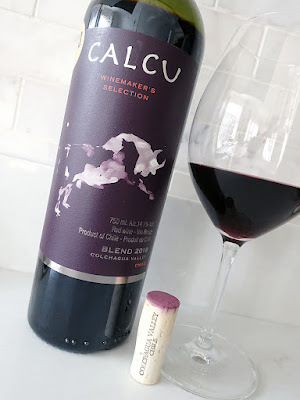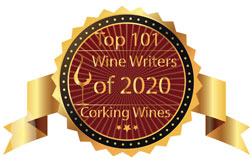red wine is a lovely Cabernet-Merlot from the Haut-Médoc wine region of Bordeaux that was featured on the back cover of last month's LCBO VINTAGES New Release Collection.
It is produced by Château Tour du Haut-Moulin, an historic wine estate situated in Cussac-Fort-Médoc, at the heart of Haut-Médoc, on the Left Bank of Bordeaux. The commune of Cussac-Fort-Médoc lies between Saint-Julien to the north, and Margaux to the south. The estate was established in 1870 and was managed by the Cazaux-Poitou family for 6 generations. As the 6th generation of the family, the current proprietor, Lionel Poitou, has been a part of the property since he was born and has been managing the family estate for nearly four decades. Lionel's philosophy is based on careful observation, attention to nature, and respect for tradition.
In 2024, Château Tour du Haut-Moulin was acquired by Tzora Vineyards, a wine company owned by the Hevrony and Flam families, two leading producers of the Judaean Hills region of Israel. The team at Château Tour du Haut-Moulin is now led by four individuals: Eran Pick MW, Golan Flam, Dan Sheinman, and Lionel Poitou. Eran holds a B.Sc. degree in Viticulture and Enology with Highest Honours from University of California, Davis. Golan has been making wine for over 25 years, while also having a B.Sc. from the Faculty of Agriculture and a Masters in Enology. Dan has a B.Sc. degree in plant sciences, and then began his journey in winemaking by focusing on both vineyard and cellar approaches and practices in Burgundy. Together, they have a shared vision to maximize the potential of the estate, while maintaining its long-standing history and tradition.
The 10-hectare vineyard at Château Tour du Haut-Moulin is planted to mainly Cabernet Sauvignon and Merlot, with a small amount of Petit Verdot, all of which is grown on the gravelly soils of the Médoc. The wines of Lionel Poitou are crafted in a style that emphasizes finesse and elegance over brute power.
The 2015 growing season with a combination of warm days and cool nights during March and early April, while the rest of April through May featured very warm and dry conditions, leading to a rapid and precocious flowering. June and July were exceptionally hot and without any rain, which eventually caused some drought stress on the vines. However, four separate rainstorms in August brought some relief to the vines. Heavy rains came in mid-September, prior to the red wine harvest, followed by sunshine with cool nights. There was more rain during the first weekend of October, but both Merlot and Cabernets were picked in unhurried conditions. From a very good to outstanding vintage for wines from the southern Médoc, let's see how this 2015 Haut-Médoc from Bordeaux is tasting tonight...
Blend of 50% Cabernet Sauvignon, 45% Merlot, and 5% Petit Verdot that was matured in French oak, only 30% new. The medium-high intensity nose is rich with ripe black fruits, black cherry, currant, and blackberry aromas that mingle with oak spice, graphite minerality, and savoury earth, plus touches of dark plum. The elegant, well-structured, medium+ bodied palate is dry with lovely black fruited, black cherry, currant, blackberry, graphite, savoury minerals, and earth flavours. Acids are succulent and juicy, while the tannins are youthfully grippy and chalky textured, yet approachable. Graphite mineral notes linger on the long, savoury, and slightly grippy finish. Highly recommended buy! Score: 90+ pts
Any other wines by this Château can be ordered through their Agent - Rare Earth Wines.
It is produced by Château Tour du Haut-Moulin, an historic wine estate situated in Cussac-Fort-Médoc, at the heart of Haut-Médoc, on the Left Bank of Bordeaux. The commune of Cussac-Fort-Médoc lies between Saint-Julien to the north, and Margaux to the south. The estate was established in 1870 and was managed by the Cazaux-Poitou family for 6 generations. As the 6th generation of the family, the current proprietor, Lionel Poitou, has been a part of the property since he was born and has been managing the family estate for nearly four decades. Lionel's philosophy is based on careful observation, attention to nature, and respect for tradition.
In 2024, Château Tour du Haut-Moulin was acquired by Tzora Vineyards, a wine company owned by the Hevrony and Flam families, two leading producers of the Judaean Hills region of Israel. The team at Château Tour du Haut-Moulin is now led by four individuals: Eran Pick MW, Golan Flam, Dan Sheinman, and Lionel Poitou. Eran holds a B.Sc. degree in Viticulture and Enology with Highest Honours from University of California, Davis. Golan has been making wine for over 25 years, while also having a B.Sc. from the Faculty of Agriculture and a Masters in Enology. Dan has a B.Sc. degree in plant sciences, and then began his journey in winemaking by focusing on both vineyard and cellar approaches and practices in Burgundy. Together, they have a shared vision to maximize the potential of the estate, while maintaining its long-standing history and tradition.
The 10-hectare vineyard at Château Tour du Haut-Moulin is planted to mainly Cabernet Sauvignon and Merlot, with a small amount of Petit Verdot, all of which is grown on the gravelly soils of the Médoc. The wines of Lionel Poitou are crafted in a style that emphasizes finesse and elegance over brute power.
The 2015 growing season with a combination of warm days and cool nights during March and early April, while the rest of April through May featured very warm and dry conditions, leading to a rapid and precocious flowering. June and July were exceptionally hot and without any rain, which eventually caused some drought stress on the vines. However, four separate rainstorms in August brought some relief to the vines. Heavy rains came in mid-September, prior to the red wine harvest, followed by sunshine with cool nights. There was more rain during the first weekend of October, but both Merlot and Cabernets were picked in unhurried conditions. From a very good to outstanding vintage for wines from the southern Médoc, let's see how this 2015 Haut-Médoc from Bordeaux is tasting tonight...
Tasting Note:
CHÂTEAU TOUR DU HAUT-MOULIN 2015 - AOC Haut-Médoc, Bordeaux, France (#26295) (XD) - $27.95Blend of 50% Cabernet Sauvignon, 45% Merlot, and 5% Petit Verdot that was matured in French oak, only 30% new. The medium-high intensity nose is rich with ripe black fruits, black cherry, currant, and blackberry aromas that mingle with oak spice, graphite minerality, and savoury earth, plus touches of dark plum. The elegant, well-structured, medium+ bodied palate is dry with lovely black fruited, black cherry, currant, blackberry, graphite, savoury minerals, and earth flavours. Acids are succulent and juicy, while the tannins are youthfully grippy and chalky textured, yet approachable. Graphite mineral notes linger on the long, savoury, and slightly grippy finish. Highly recommended buy! Score: 90+ pts
Any other wines by this Château can be ordered through their Agent - Rare Earth Wines.




























